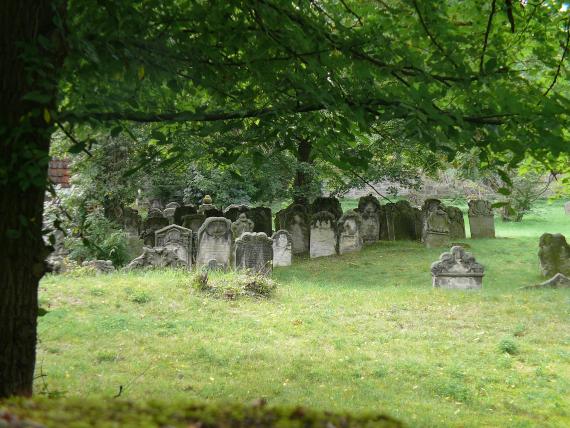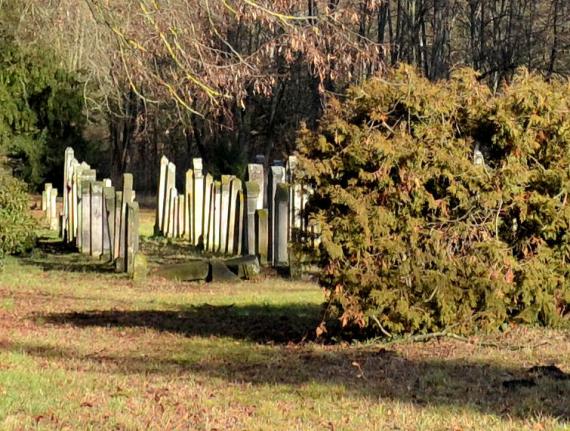Am Berge 5-9 (Eingang über den Katholischen Friedhof)
38820 Halberstadt
Germany
The cemetery „Am Berge“ is the second, which was established by the Jüdische Gemeinde - immediately north of the cemetery "Am Roten Strumpf". Both are separated only by the access road to the Catholic cemetery. When this second area behind the houses Am Berge 5-9 was leased or acquired for the first time is disputed: 1696 (when with the extension of the old cemetery already the property "Am Berge" was added?) or actually only 1844 (as already described by the community historian Auerbach in 1866). The mostly bilingual, Hebrew-German gravestones from the 19th century suggest an occupation clearly after 1800. The last burial took place in 1934.
After the construction of a wall and a provisional mortuary or shed, the burial brotherhood (Chevra Kadischa) acquired the three half-timbered houses at Am Berge 7-9 after 1860 and rebuilt them. The Tahara room was located in house No. 9, right next to the original entrance (from Süden). After creation of the third cemetery at the Klein-Quenstedter Chaussee (1895) the houses were leased from 1899 and only 1940 - forcibly - sold.
In contrast to the neighboring area "Am Roten Strumpf" üsurvived the cemetery "Am Berge" the November pogrom 1938 and the destruction in World War II largely unscathed. After 1945 above all church circles cared for its preservation, after 1990 the municipality and the Moses Mendelssohn academy.
Today about 350 gravestones are preserved, majority from the time before 1895, in 15 rows to the east aligned - among them also some for members of the Halberstädter entrepreneur family Hirsch. The stone of company founder Aron Hirsch (1783-1842), adorned with a Levite jug, stands hidden against the cemetery wall in the southern corner.
In 1990/91 the new access was moved from the east (Am Berge 8) to the west - via the Catholic Cemetery. A visit is possible Sun-Fri, the keys are available at the Berend-Lehmann-Museum (Judenstra;e 25/26).




Add new comment